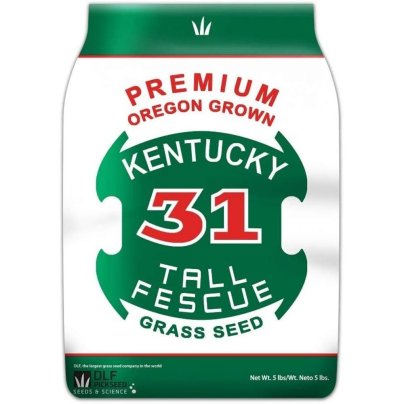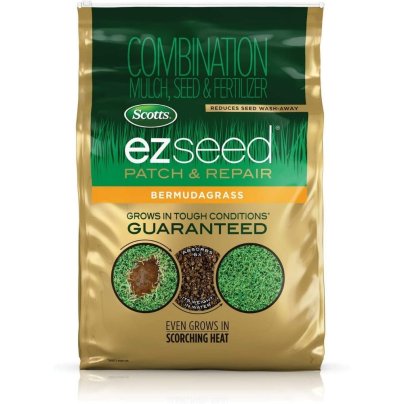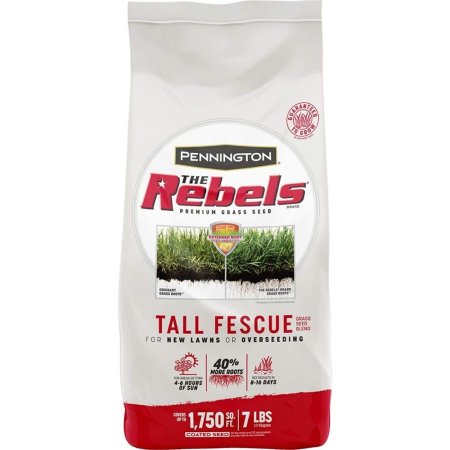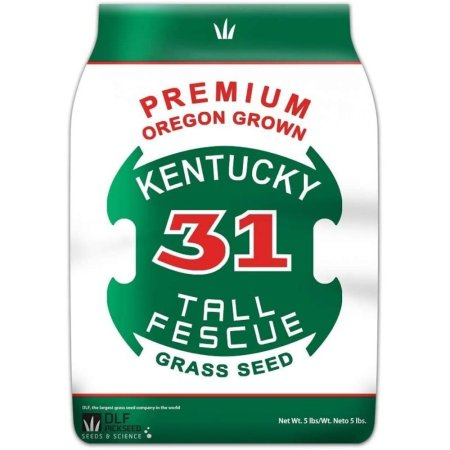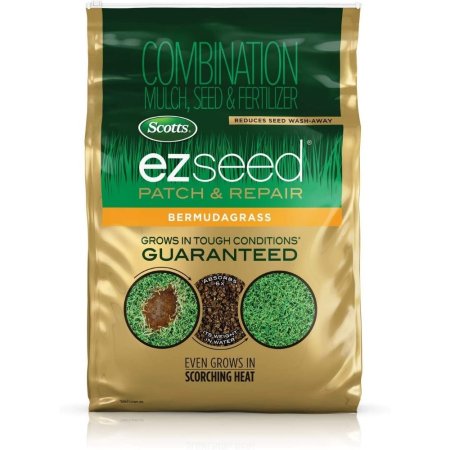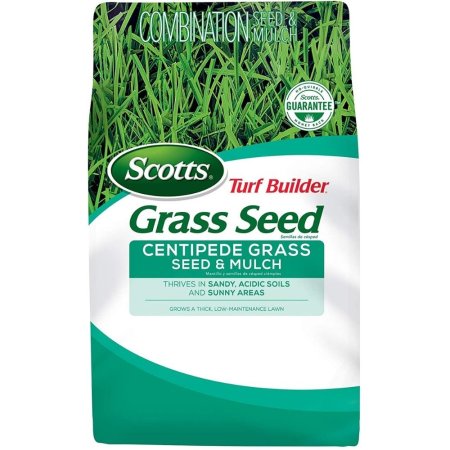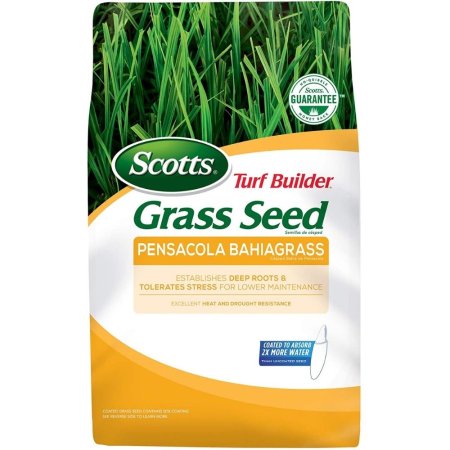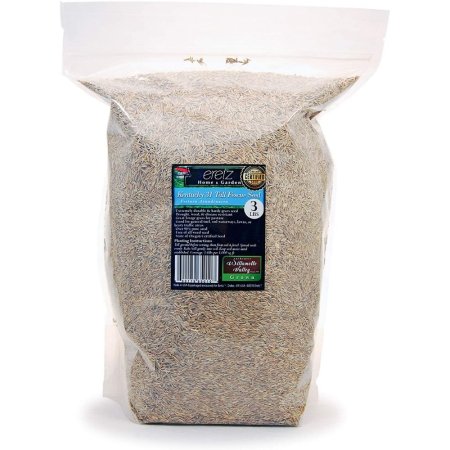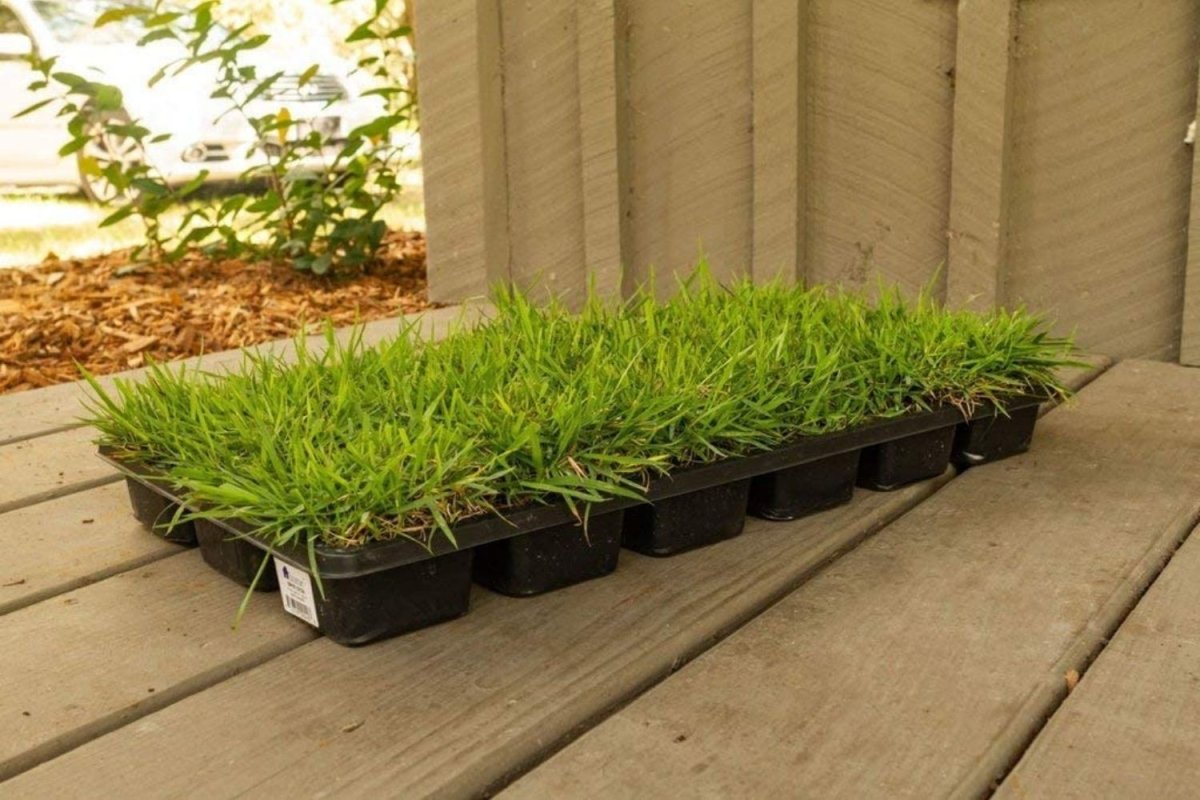
We may earn revenue from the products available on this page and participate in affiliate programs. Learn More ›
A lush green lawn isn’t just nice to look at; it also slows down water and soil runoff, reducing the effects of erosion. However, if your yard has sandy soil, it can be challenging to grow a standard species of grass that isn’t able to adapt to the arid terrain. The good news is that many different species have been specifically cultivated to deal with sandy soil, drought, heat, and high and low humidity, as well as varying amounts of shade, sunlight, and foot traffic.
The best grass for sandy soil is typically a drought-resistant, hardy species capable of growing and developing strong root systems despite the poor nutritional value of the soil. This guide will explore the factors to consider when shopping and then review some of the top products on the market that include several different species adapted for sandy soil.
- BEST OVERALL: Pennington The Rebels Tall Fescue Grass Seed Blend
- BEST BANG FOR THE BUCK: DLF Premium Oregon Grown Kentucky 31 Tall Fescue
- BEST BERMUDA GRASS: Scotts EZ Seed Patch and Repair Bermudagrass
- BEST CENTIPEDE GRASS: Scotts Turf Builder Centipede Grass Seed and Mulch
- BEST BAHIA GRASS: Scotts Turf Builder Grass Seed Pensacola Bahiagrass
- BEST FESCUE GRASS: Kentucky 31 K31 Tall Fescue Grass Seed by Eretz
- BEST ZOYSIA GRASS: Florida Foliage Zoysia Sod Plugs – 3″ x 3″ Plugs
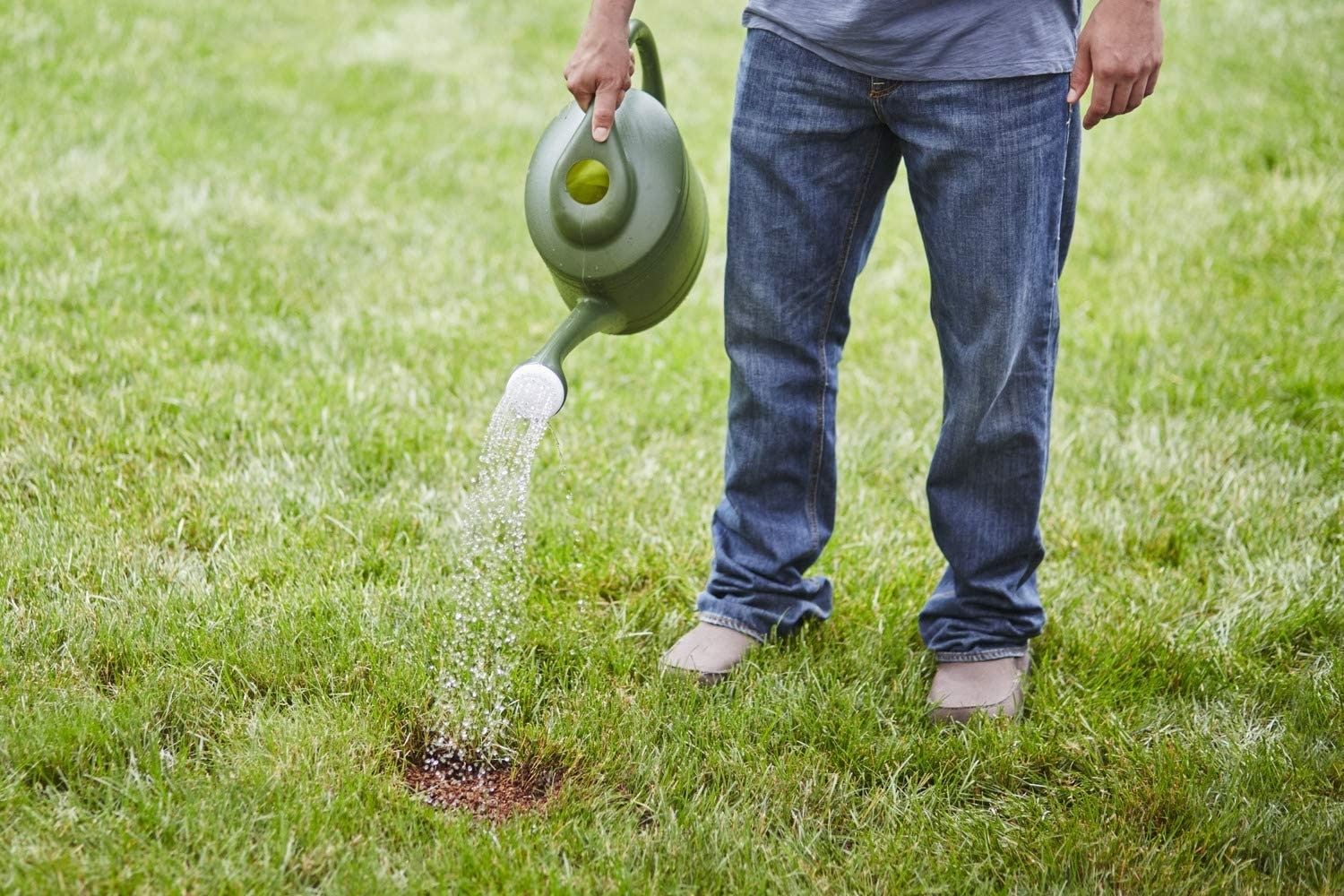
What to Consider When Choosing the Best Grass for Sandy Soil
Before choosing grass for sandy soil, consider these important factors to help make the best decision, including the type of grass, the root system, its drought-resistance properties, and the expected amount of foot traffic. Understanding how these factors can affect the grass makes it easier to make an informed choice about which product is the best grass for sandy soil in a yard.
Type
While there are many different types of grass, the task is to find a suitable species for growing in sandy soil. These are among the grass types for growing a lawn from seed or for planting sod in sandy soil.
- Bermuda grass has dense, dark green blades, and it’s known as one of the most drought-resistant grass varieties. Its roots can grow as deep as 6 feet while its low water usage allows it to stay green when other grass types begin to yellow and brown. This grass species can also go dormant for about 3 to 4 weeks after an extended drought to protect itself from dying.
- Centipede grass is a very low-maintenance species with exceptional heat tolerance. It thrives under direct sunlight but can also grow in mildly shady spots. This grass has a coarse texture and a medium- to light-green color, making it a popular option in the Southwest.
- Bahia grass is a popular choice for hot climates due to its high heat tolerance and drought resistance. It has broad leaves and a coarse texture that grows strong under direct sunlight, thriving where other grasses quickly fade and burn out.
- Fescue grass is one of the most common grass types in the U.S. The popularity of fescue grass is due to its adaptability, allowing it to grow in high or low temperatures, shade, sunlight, and drought conditions. However, heavy foot traffic can damage this grass, resulting in annual reseeding for problem areas.
- Zoysia grass is a tough, resilient species of grass known for its high resistance to foot traffic, drought, and high temperatures. The dense lawn formed with zoysia grass chokes out weeds and requires very little maintenance, though the roots only grow to about 2 feet deep. It’s known for the ability to stand up to heat, drought, and high foot traffic. While zoysia seed may be difficult to find, it’s commonly sold as sod and grass plugs.
Drought Tolerance
Drought is a common cause of sandy soil and should be considered when selecting a grass type for the yard. Most grass species that can grow well in sandy soil offer at least a moderate resistance to drought conditions. Features that encourage drought resistance include broad, resilient leaves that gain ample energy from direct sunlight, densely packed grass that prevents erosion and water runoff, and long root systems that take advantage of deep water and mineral deposits.
Even in non-drought conditions, sandy soil doesn’t sufficiently hold water, so this means the grass needs these drought-resistant characteristics simply to survive. If you’re concerned about prolonged droughts, consider a grass type like Bermuda grass that can go dormant for up to 4 weeks instead of dying in drought conditions.
Root System
Grass primarily uses its root system to draw nutrients and water from the soil, but sandy soil is notoriously dry and filled with air pockets that can actually damage exposed roots. Shallow roots are the most vulnerable to the deficiencies in sandy soil, so look for grass species that produce long roots extending more than 1 to 2 feet into the ground, like Bermuda grass or fescue grass, which can grow to a depth of 5 feet.
These long roots grow through the sandy soil, finding water deposits buried deep under the surface. At this depth, the roots are also protected from changing temperature extremes, and they provide a strong base to support the leaves growing above the surface of the soil.
Humidity and Heat
One of the more challenging aspects to manage when growing grass in sandy soil is the level of humidity. Typically, people struggle to properly irrigate grass planted in sandy soil, overlooking the speed with which water runs through the rocky ground. High humidity helps to irrigate the grass, but it can also lead to fungal diseases, so users need to watch out for yellow or brown patches in the lawn.
Heat is also a concern, especially in southern locations that get ample amounts of hot, direct sunlight for extended periods throughout the day. If the grass isn’t resistant to these temperature extremes, it quickly yellows, dries, and burns out entirely. Look for grass types with broad, coarse leaves that increase the heat tolerance of the plant so it can thrive in these conditions.
Shade and Sunlight
Like resistance to heat and humidity, the level of required shade and sunlight can vary among the different types of grass, so it’s essential to consider the yard layout before choosing a product. Look for any objects that may cast long shadows on the lawn throughout the day, such as trees, a tall fence, a shed, or any other structures or obstacles.
Most grass species prefer a balance between shade and sunlight, but the species made for growing in sandy soil tend to thrive better under long periods of direct sunlight. However, they will also grow in shady conditions, just not with the same vitality or vibrance.
Foot Traffic
A lawn isn’t just for looking at and admiring from the back patio. Kids and pets frequently walk, run, and jump on the lawn, taking full advantage of the soft cushion provided by the dense green leaves. This regular use is typically referred to as foot traffic and depending on the type of grass, it can be detrimental to a lawn or it may go almost entirely unnoticed.
Zoysia and Bermuda grass are considered highly tolerant of foot traffic for different reasons. Zoysia grass has a densely packed 2-foot-deep root system, providing strong support for the grass. Bermuda grass isn’t as dense, but the roots can grow to 6 feet deep. Centipede and Bahia grass have moderate foot traffic resistance. Fescue grass can be damaged by heavy foot traffic, making it a poor option for public or commercial locations that see high levels of visitors.
Our Top Picks
This list of top picks was chosen primarily for the type of grass and the features that allow each selection to thrive in sandy soil and also considers the quality and overall value. Read on to discover some of the best grass for sandy soil on the market today.
Best Overall
Pennington The Rebels Tall Fescue Grass Seed Blend
It’s more than frustrating to take the time to properly plant, fertilize, water, and maintain new grass only to have it fail. This tall fescue grass from Pennington is an excellent option for successfully growing in sandy soil. This product is a tough, low-maintenance type of grass that has a high level of adaptability, allowing it to thrive in a wide variety of different environments.
The grass has long roots that can withstand moderate foot traffic and insects. The roots also give this grass high heat tolerance and decent resistance to drought conditions. It grows well in both full sun and partial shade but thrives in areas that receive at least 4 to 6 hours of sun daily. Users can expect to see sprouting after about 8 to 16 days. This grass seed is available in a 3-pound bag and a 7-pound bag.
Best Bang for the Buck
DLF Premium Oregon Grown Kentucky 31 Tall Fescue
Soak up every bit of moisture necessary to successfully grow a lawn with this inexpensive tall fescue grass from DLF that has coated seeds and is designed to absorb and retain a high level of moisture even in sandy soil. It can thrive in full sun or partial shade but should have at least 4 to 6 hours of sunlight daily.
This grass sprouts roots up to 5 feet deep, giving it a level of durability that can resist moderate levels of foot traffic, though heavy foot traffic can damage the grass. It also has a high level of resilience to hot temperatures and drought conditions and takes just 7 to 14 days to sprout. The grass seed comes in a 5-pound bag.
Best Bermuda Grass
Scotts EZ Seed Patch and Repair Bermudagrass
Bermuda grass is known for the high level of heat tolerance and drought resistance, so it shouldn’t be surprising that this Scotts EZ Seed Bermudagrass excels in sandy soil. The grass grows in scorching heat, arid soil, and in flat or sloped ground, and it even resists regular high traffic abuse, thanks to its long roots that can extend up to 6 feet deep.
This Bermuda grass is combined with mulch and fertilizer in a 20-pound bag, and the seeds are coated with a tackifier, which helps bind them to the soil and prevent them from washing away. This protective layer also keeps seedlings safe from harmful fungal diseases that can kill new grass, allowing it to sprout within about 14 days. The grass seed is available in a 3.75-pound bag and a 10-pound bag.
Best Centipede Grass
Scotts Turf Builder Centipede Grass Seed and Mulch
Choosing centipede grass to plant in sandy soil is a good option for people who prefer a low-maintenance yard. It has very densely packed leaves that choke out weeds and grow slowly, reducing the amount of time spent mowing the lawn. This Scotts Turf Builder centipede grass comes packed with mulch in a 5-pound bag to help the seeds take root and grow without issue, sprouting within about 10 to 28 days.
Full sun and light shade are both suitable for the nutritional needs of centipede grass, which can thrive in sandy soil and acidic soil due to the up to 4-foot-long roots. The blades have a medium coarse texture and broad leaves that help to absorb the sun and shade the roots. This feature allows the grass to resist moderate drought conditions.
Best Bahia Grass
Scotts Turf Builder Grass Seed Pensacola Bahiagrass
Specifically cultivated to grow in full sun, this Scotts Turf Builder is an ideal option for the Deep South, where heat, humidity, and droughts are common obstacles to a healthy lawn. The Bahia grass roots can grow to 8 feet in depth, forming a stable root system that helps them withstand heavy foot traffic. These deep roots are also responsible for the high level of drought resistance that allows this grass to thrive in climates that burn out less robust grass species.
The Bahia grass seeds are coated to help increase water absorption, making it easier for them to take root and grow quickly. Users can expect the grass to begin sprouting within 7 to 14 days. It is available in a 5-pound bag.
Best Fescue Grass
Kentucky 31 K31 Tall Fescue Grass Seed by Eretz
While fescue grass is typically vulnerable to damage from foot traffic, Eretz has cultivated this tall fescue grass to increase the durability, allowing it to withstand heavy foot traffic and moderate drought conditions. The fescue grass is hardy and adaptable, making it a suitable choice for a variety of different climates. Additionally, individuals with livestock can use it as a forage grass due to its fast growth.
This tall fescue grass sprouts a root system that can extend up to 5 feet in depth, reaching water deposits and minerals buried deep in sandy soil. After planting the grass seed, keep the ground moist throughout the day to see it sprout within 10 to 20 days. It comes in a 1-pound, 3-pound, 5-pound, 8-pound, and 10-pound bag to suit a variety of needs and yard sizes.
Best Zoysia Grass
Florida Foliage Zoysia Sod Plugs – 3" x 3" Plugs
These 18 zoysia grass plugs from Florida Foliage come ready to be planted, saving the hassle of trying to germinate seeds. Just plant them about 15 inches apart in the sandy soil, and the grass plugs will grow together, forming up to 32 square feet of dense zoysia grass. This hardy grass species tolerates shady conditions, though it grows best when exposed to at least 4 to 6 hours of sunlight daily.
Zoysia grass has been cultivated for high temperatures and drought conditions, with a seasonal dormancy that reduces the amount of water necessary without impacting the color of the grass. It is also a good choice for homes with kids or pets because the densely packed root system helps the grass resist heavy foot traffic, providing a lush carpet for playtime.
FAQs About Grass for Sandy Soil
A hardy, resilient species of grass grows and thrives in sandy soil, but if you aren’t quite sure which type of grass is best or when is the best time to put down grass seed or sod, then continue reading. Several of the most frequently asked questions about the best grass for sandy soil are answered below.
Q. What kind of grass seed should be used for sandy soil?
The best grass seed varieties for growing in sandy soil include tall fescue, zoysia, Bermuda grass, centipede grass, and Bahia grass. These grasses form densely packed or deep roots that help absorb water and nutrients from the arid soil.
Q. What month is best to put grass seed down?
The ideal planting month for grass seed varies depending on where you live. However, the late summer and early autumn months are usually the best options due to the warm soil, moderate daytime temperatures, and cool nighttime temperatures that encourage rapid germination.
Q. How much compost should be added to sandy soil?
Generally speaking, growers should add about 0.25 to 0.5 inches of compost if placing it on top of the soil and 1 to 2 inches of compost if it is mixed into the soil.
Q. Can sod be planted in sandy soil?
Yes, but add 4 to 6 inches of topsoil before laying the sod to give it the best chance to germinate, take root, and grow successfully.

